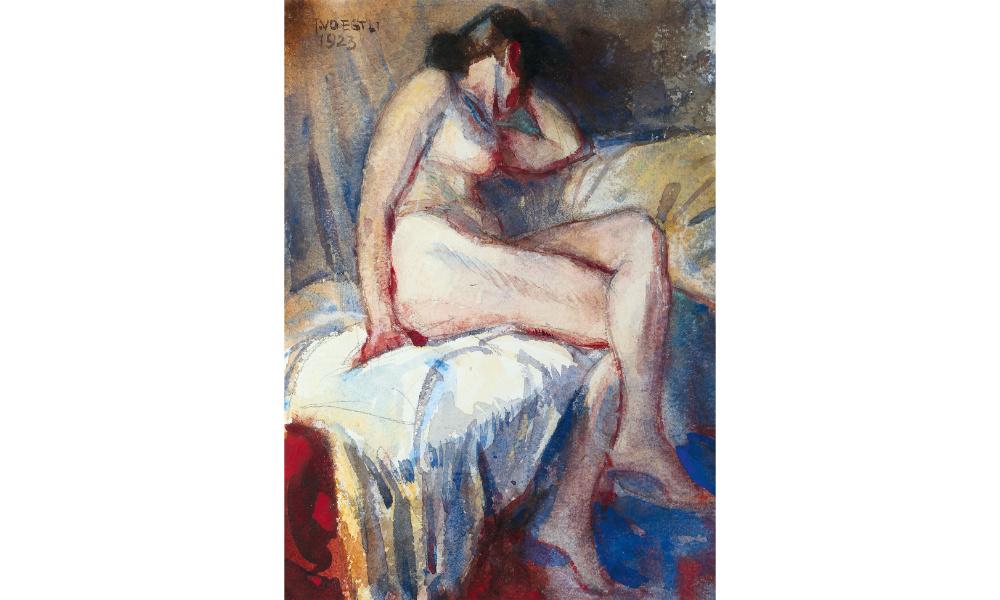This watercolor painting depicts the nude figure of the artist’s wife, Anna. She is seated in profile on a bed draped in white cloth. She is leaning on her left arm and her face is turned away from the viewer; only her ear, neck, and pulledback dark hair are visible. The artist uses blue, yellow, and red elements to add
depth and color to the composition. The picture has been painted loosely, implying use of quick brushstrokes to suggest forms and light, as opposed to painting in a hyper-realistic style.
This work reminds us of Auguste Renoir’s “Reclining Nude.” Anna Voegtli’s demure glance away from the viewer possibly indicates that she has reluctantly accepted to pose for this painting. The figure is defined against her brushed domestic space. The spatial relationship between the nude and the background
is deliberately clear with contrasts. In The Intertwining of Aesthetics and Ethics: Exceeding of Expectations, Ecstasy, Sublimity, Skorin-Kapov (2016) expresses about the immortalizing power of art, which is applicable to this painting as well:The true work of art strives to capture the essence of the immediacy and complexity of the situation, stripped of non-essential details, and pleasing to both the senses and the intellect. Ancient works of art served to immortalize beauty, which is just a fleeting moment in the life of a human being. An artist captures beauty by using all her/his capacities, and the result is an idealized
form that surpasses the artist. (p. 32)
Sources
Khazaie, Davood (2022) “Nude of Anna Voegtli ”, in: JULIUS VOEGTLI: A Swiss Impressionist Pioneer, Edited by Nour Nouri & Davood Khazaie, Pashmin Art Publishers, pp.140-141.
Julius Vögtli (1879-1944) was a Swiss painter who played a key role in the development of impressionism in Switzerland. His landscape paintings, which often depicted the Swiss countryside, were characterized by their vibrant colors and expressive brushstrokes. Vögtli’s work helped to establish impressionism as a major artistic movement in Switzerland during the late 19th and early 20th centuries.



